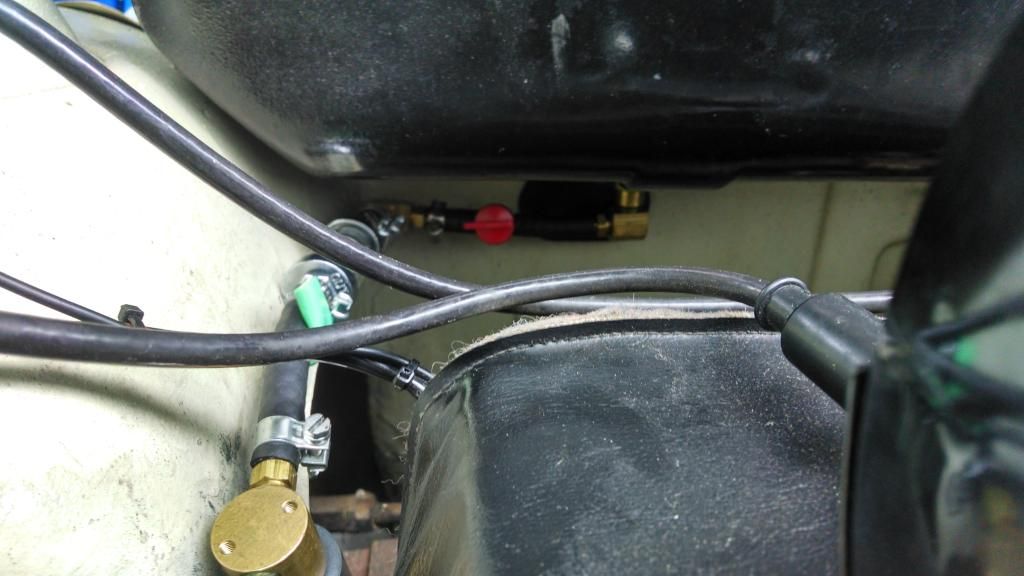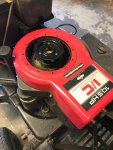The fuel solenoid requires a minimum of 9v to operate, and the regulator/rectifier requires 10v to close the internal switch to allow power to reach the battery. Some engines are set up for the regulator to output power without a battery for various operations( wide area mower) so it is doable, which would also power the fuel solenoid.
You can get some mowers to run without a battery, but if you momentarily get the voltage to drop below that magic number, say kicking in the pto, the charge system will open the micro switch, and kill output from the regulator, and therefore shut down the engine because no power is reaching the solenoid.
The fuel solenoid job is to help prevent the BANG it will no stop a carb from overflowing and flooding the engine and crankcase with gas. Now there are others systems out there that shut off the fuel flow to the carb Some are electric, some work on engine cranking vacuum pulses.
You can get some mowers to run without a battery, but if you momentarily get the voltage to drop below that magic number, say kicking in the pto, the charge system will open the micro switch, and kill output from the regulator, and therefore shut down the engine because no power is reaching the solenoid.
The fuel solenoid job is to help prevent the BANG it will no stop a carb from overflowing and flooding the engine and crankcase with gas. Now there are others systems out there that shut off the fuel flow to the carb Some are electric, some work on engine cranking vacuum pulses.


